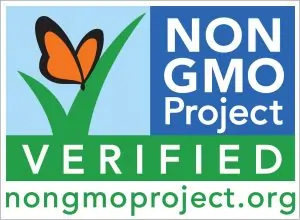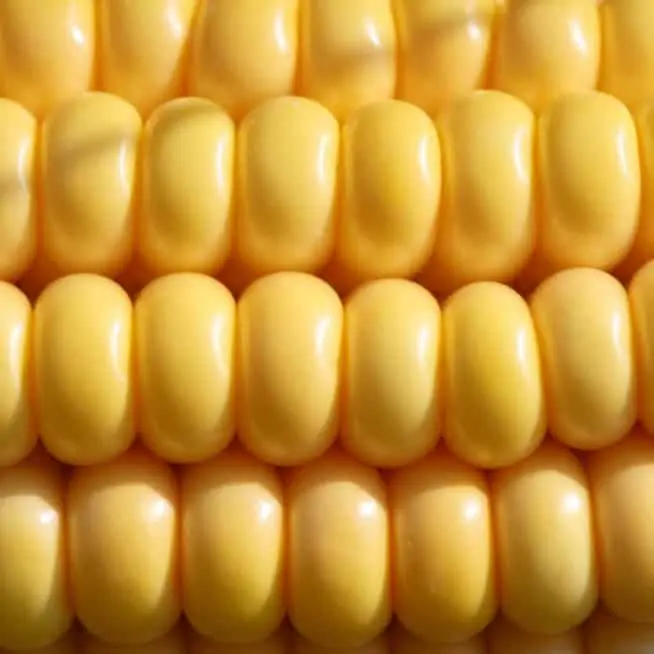
The Non-GMO Project Verified seal is verified and is a highly meaningful label for consumers wishing to avoid GMOs in the foods they buy and to support farmers who don’t use GMOs. It means producers complied with the Non-GMO Project’s standards, which are aimed at helping consumers find foods without GMOs. “GMO” stands for genetically modified organism and refers to plants, animals, or other organisms whose genetic code has been changed in ways that do not occur naturally.
Is the label verified?
Yes
Is the meaning of the label consistent?
Yes
Are the label standards publicly available?
Yes
Is information about the organization publicly available?
Yes
Is the organization free from conflict of interest?
Yes
Was the label developed with broad public and industry input?
Yes

This label can be found on: Processed foods and beverages, fruits and vegetables, grains, dairy products, meat, fish, eggs
ORGANIZATION: The Non-GMO Project
url: www.nongmoproject.org
LABEL STANDARDS: www.nongmoproject.org/product-verification/the-standard/

What this label means
One of the stated goals of the Non-GMO Project, the organization behind the Non-GMO Project Verified seal, is to provide consumers verified non-GMO choices. “GMO” stands for genetically modified organism and refers to plants, animals, or other organisms whose genetic code has been modified in a laboratory, as well as cloned animals and their offspring.
The seal means that the product complied with the Non-GMO Project’s standard, which aims to verify that systems are in place for traceability, segregation to avoid contamination, and meaningful and on-going testing of ingredients that are at high risk of being genetically engineered or contaminated with genetically engineered organisms.
GMOs have been grown on a commercial scale in the U.S. since 1996. Today, the seeds used to grow the vast majority of corn, soybeans, rapeseed (to make canola oil), and sugar beets in the U.S. have been genetically engineered to be tolerant to a specific chemical herbicide, glyphosate. Also called herbicide-tolerant crops, these genetically engineered plants can survive the application of glyphosate, which would otherwise have killed the crops along with the targeted weeds. Due to the problem of weeds becoming resistant to glyphosate, varieties that are resistant to other herbicides have been genetically engineered.
Another trait that has been genetically engineered into food crops is pest resistance. These varieties have been genetically engineered with genes from a soil bacterium that produces a protein that is toxic to insects. The genes are modified and inserted into the genetic code of the plants, so that the plant manufactures its own pesticide.
Herbicide tolerance and pest resistance represent over 99 percent of traits in genetically engineered crops currently on the market.

A closer look at the standards
The Non-GMO Project Verified standards prohibit crops from genetically engineered seed or genetically engineered animals (including clones). To prevent contamination of crops, the standards require procedures for cleaning any facilities to remove GMO contamination and segregation during production.
The standards require testing of high-risk ingredients such as corn, soy, canola, and sugar beets; every lot of a major ingredient that is at high risk of contamination has to be tested. The samples can be collected either by the company or by the technical administrator. The Non-GMO Project also operates a Surveillance Testing Program, where samples are collected, as an additional quality control measure.
The standards set action thresholds for inputs. If test results show levels of genetically engineered DNA above these levels, the inputs cannot be intentionally used. The action threshold for high-risk seed and other propagation materials is 0.25 percent; 0.9 percent for human food, ingredients, supplements, personal care products, and other products that are either ingested or used directly on the skin; 5 percent for animal feed and supplements (this action threshold is based on the annual average of all lots tested); and 1.5 percent for packaging, cleaning products, textiles, and other products that are not ingested or used directly on the skin.
A Non-GMO Project Verified seal on animal products means that the animals were not genetically engineered, but also that the animal feed was tested for major GMO crops (such as corn and soy) and contained less than 5 percent GMO material.
CONSUMER REPORTS EVALUATION

How meaningful is this label?
The Non-GMO Project Verified seal is a highly meaningful label for consumers wishing to avoid GMOs in the foods they buy and to support farmers who don’t use GMOs.
For consumers wishing to avoid GMOs in the foods they purchase, it is especially important to look for verification of a non-GMO claim, like the Non-GMO Project Verified seal, on products with ingredients that are commonly derived from genetically engineered organisms, including corn, soybeans, canola oil, and sugar from sugar beets.
Even on products whose ingredient list does not contain the words “corn” or “soybeans” (for example, “corn syrup” or “soy protein isolate”), the Non-GMO Project Verified seal is helpful. Consumers may not know that some added ingredients are made from crops that are at high risk of being GMO. For example, ingredients such as dextrose, maltodextrin, and citric acid are often made from corn, yet the source material (corn) is not not required to appear on the label.

Is the label verified?
Yes.
Producers who wish to have their product verified work with a technical administrator, which is a certification body approved by the Non-GMO Project to assess compliance with the standard on behalf of the project.
All facilities are required to be inspected annually, with some exceptions (e.g., if the facility only handles low-risk inputs), to ensure compliance with traceability and segregation requirements.
The standards also include a testing component as part of the verification process. Testing is carried out by an accredited laboratory that is approved by the Non-GMO Project. They also manage a surveillance testing program to verify compliance with the Non-GMO Project Standard. The surveillance testing includes random checking for compliance with the action thresholds and verifying appropriate use of the seal.
Testing is not required for low-risk inputs; instead, affidavits may be used to confirm compliance.
Is the meaning of the label consistent?
Yes. All products with the Non-GMO Project Verified label have to be verified by the Non-GMO Project and meet the requirements in the Non-GMO Project Standard.
Are the label standards publicly available?
Yes.
www.nongmoproject.org/product-verification/the-standard/
Is information about the organization publicly available?
Yes.
Board of Directors: The organization lists members of its Board of Directors and their affiliations on its website.
Financial information: Financial information for the Non-GMO Project, a 501(c)(3) non-profit organization, is publicly available.
Is the organization free from conflict of interest?
Yes.
Standards development: The Standards Oversight Committee proposes revisions to the standard, and the Board of Directors, which holds final decision-making authority, votes on standard revisions. The Terms of Reference require that extensive efforts are made to achieve consensus between the Standards Oversight Committee and the board regarding the content of the standard. The Non-GMO Project has a conflict of interest policy for the Board of Directors. None of the members on the Standards Oversight Committee are employees of companies with verified products.
Verification: We verified that all technical administrators used by the Non-GMO Project have conflict of interest policies and use inspectors that are free from conflict of interest.
Was the label developed with broad public and industry input?
Yes.
Standards development: The standards were developed with broad industry input, and draft standards were made available to the public for comment.
Standards updates: When standards are updated, they are posted on the website, and public comments are accepted during each updating cycle.
